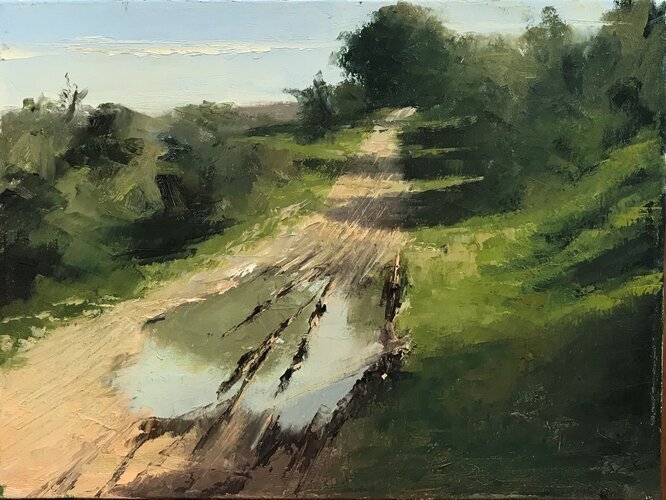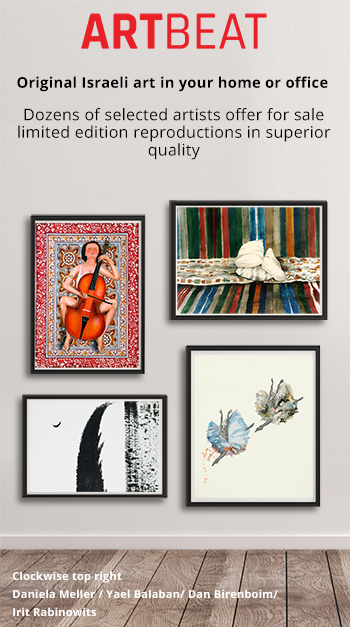Art Shows > Seventy Percent Water
Seventy Percent Water / Rothschild Fine Artטלפון - +972 77 5020484 29/10/2020 to - 28/11/2020 The painter - any painter - while painting, applies a magical theory of vision. He has to admit that things go into it, or, if we use Melbranche's sarcastic dilemma, that the wind comes out through his eyes to walk things through. All this, because the painter does not stop directing his secret vision into things ... " Maurice Merlot-Ponty A walk in the landscape, leveling a path, sight and observation, a course of thought and spirit - all of these are at the core of Yehuda Armoni's paintings, they are the heart of the matter. And so is the freedom to choose a "place" and to be hosted in it, to respect its beauty and to respect it with quiet and deep observation. And there is also an attempt to go into the depths of things, into the depths of the being that is here and now but also broad and abstract, one that crumbles the materiality of the place into molecules of understanding and color and light. And something else returns to the canvas and floats among the brushstrokes that create the painting - these are the results of his "seeing of the secret": the sense of the image itself, as perceived by the sensory and the sensory. But we preceded the latter, for according to the correct order of things it all begins with a walk in the landscape: The path ascends moderately upwards, on both sides a grove of gray-green pines, low bushes with greenish foliage glide to its edges. Then a deliberation: whether to go to the right or to the left, since right in the middle of the road a green puddle of water protrudes, inside it the inversion of the treetops and next to it the rest of the sky where clouds sail. The edge of the puddle is dark and there is a lumpy mud and heavy soil from water, which can almost be smelled by its fresh, distinct smell. To the right is a small lawn that reaches up to the pond water. The grass is partly lit and rests on it in the same comfort as the dark photograph of the treetops and rays of morning sun. You can walk along the edge of the dirt path to the left of the pond, continue slowly up towards the vanishing horizon amidst a thicket of trees. Later in the trip, another section of path, the tranquility of which has already been violated by wheels that marked 'Forward ...' and cut the large puddle that was in it. Strips of black and wet soil next to sandy dirt and inside the mud puddles that formed, rested obediently water in gray and green light blue that began to sprout inside them. Horizontal rays of light cast rays of light at two and a half across the path. The bright light pulls the eye further and further to where the path disappears back into the thicket, just below the wooden frame that frames the painting. And you - want to continue walking the path, within the local landscape and so familiar, which despite its prevalence turns in paintings into a-H-R-W-T. And wants to explain to yourself the meaning of the experience created in front of the paintings, which hold together in perfect balance the different and the familiar alike. And recalls the words of Rainer Maria Rilke, who seeks to depict a painting by Paul Cezanne and struggles with language limitations to depict talent and a pulsating pictorial result: "... and yet, the object itself is recognizable here, and the words, so unhappy when seeking to convey pictorial facts To recover ... and describe what is there ... " Indeed the words mourn in the face of the inability to be precise in describing the landscape from the paintings and the experience in front of them: the misty mist on Cypress Hill, local wooded trails that smell almost damp dust in your nose, the nearby fields surrounded by yellowish green foliage, the hills around the corner, the rainy winter The glow in bright green after multiple rains and the puddles lay in dark, heavy soil. The sights are local and familiar and yet a sense of vague difference, emphasizing the fact that you are standing in front of a painting. Fine painting, carefully made, very realistic and yet personal and exciting. Not "the thing itself" - but a reflection of the painter's gaze and his spirit that wandered between things. Armoni carefully selects the painting districts that will allow him to be a guest and fully experience them. Going out to paint outdoors is for him an everyday need, like breathable air, like thirsty water. He ventures into the open landscape in search of a challenging adventure, time and time again. The search is guided by the desire to find drama, surprise, excitement and another challenge in the landscape. The eye looks at the landscape, searches for the painting hidden in it and seeks to be revealed. The daily outing to nature purifies the gaze, and accustoms him to noticing the changes taking place outside. The familiar local landscape becomes even more familiar, and the slight and imperceptible changes to the unskilled eye ? dust mists or damp spray, rays of light placed on the road or a gust of wind that will deflect the treetops ? will all find their place on the canvas thanks to the close and sensitive look. And when he finds what his eyes have been looking for, Armoni is filled with vitality and an inner fire burns joy and a miracle dance that is about to take place on the taut cloth before him and the beginning of a journey. For, the hours of painting in the landscape are also hours of staying in hidden mental districts where Armoni makes his way on the canvas, in a journey that sounds like an emotional and spiritual upheaval. It describes states of flow and search, uncertainty, storm, storm, moments of despair and remorse: "The road is interesting but sometimes exhausting. I think we are on the right path, but then everything gets complicated ... I have no idea how I get out of here. Deletes and starts again, or from the middle. Insists. Do not give up, level the way. Suddenly there are and things become clear. A moment of gaiety ... " For the past year, these have been the watermarks - puddles and other seasonal waterways, that have caught Armoni's eyes and he hurried back to look for them in the landscape. More and more puddles, each unique in its shape and exerting its effect on the environment were captured in his paintings, before succumbing to dryness and being lost, until lost. Along with the concentrated gaze and personal negotiation with the landscape that characterizes Armoni, there is in these paintings a deep fascination with the water and their unconventional action in the local landscape as well as a deep appreciation and recognition of their vitality for it, body and soul. It is the same enchantment that presents itself to the viewer, who in his devotion to a walk in the painted landscape of Armoni also remains fascinated and excited, as after a walk in nature. Tal Gelfer [1] Maurice Merlot - Ponty, The Eye and the Spirit, Wrestling Publishing, 2004, Tel Aviv, p. 41 2 Rainer Maria Rilke, Letters on Cezanne , Am Oved, 2003, Tel Aviv, 74 location - Rothschild Fine Art Time - 29/10/2020 to - 28/11/2020 |
The content appearing on this page and the details of this exhibition are shown on the behalf of the advertisers and on their responsibility.
All rights reserved to - artbeat.co.il © Israel Art
|1|


